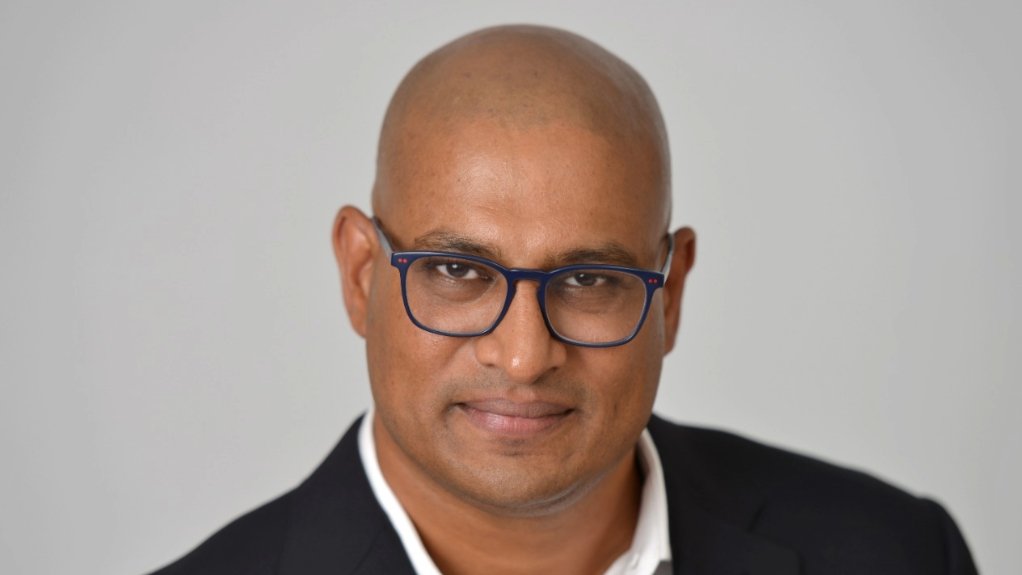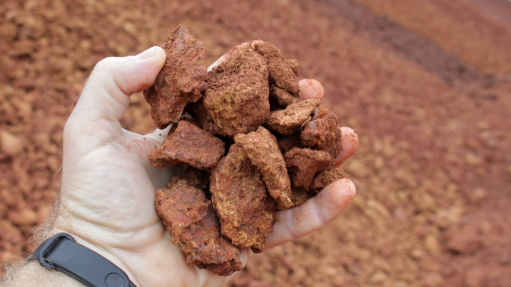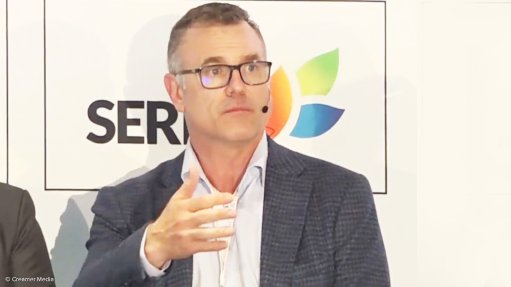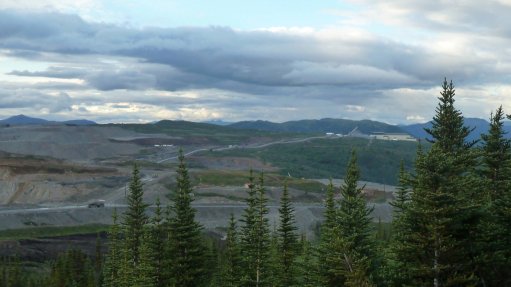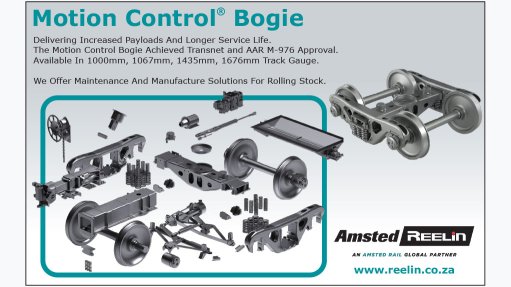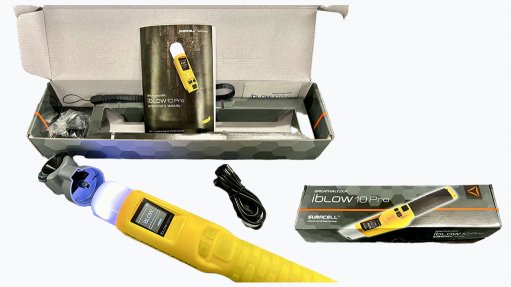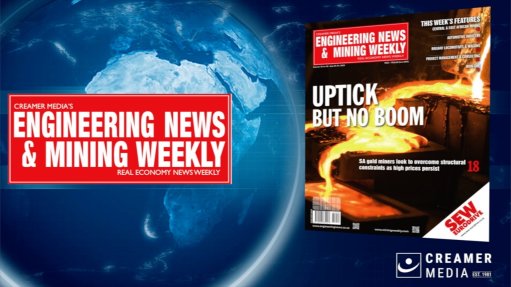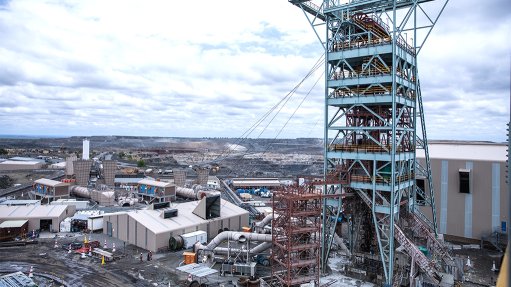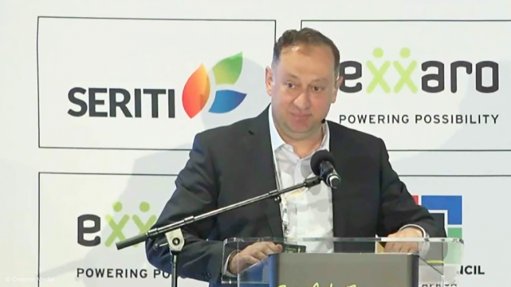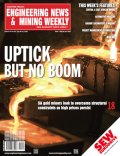Industry Leader Calls for Circularity to Power the Future with Critical Minerals: “Copper is the New Gold - And We’re Running Out”
This article has been supplied by the author and has not been written or solicited by Creamer Media. It may be available only for a limited time on this website.
By: Devan Pillay - President of Heavy Industries at Schneider Electric
With copper currently under the global spotlight, Devan Pillay, President of Heavy Industries at Schneider Electric (recognized as The World’s Most Sustainable Corporation), issues a call to action as the world faces a looming copper crisis:
Once considered mere industrial staples, metals such as copper, nickel, and lithium have become crucial resources for technologies that drive both the global energy transition and digital transformation.
Copper, particularly, is the unsung hero of the digital and energy revolutions. It powers everything from AI and electrification to renewable energy and the data centers expected to nearly double by 2030. Electric vehicles, solar panels, semiconductor chips, and energy storage systems all depend on it, making copper the foundation of industrial innovation.
But here’s the reality: global copper demand is set to double by 2050, and supply is already under pressure. Copper is the new gold - but u nlike gold, we can’t afford to stockpile it.
More generally, anticipated demand for critical minerals is expected to surge by nearly 500% by 2050 according to the International Energy Agency (IEA). The IEA’s Global Critical Minerals Outlook 2025 reports that in 2024 demand for lithium increased by nearly 30%, and 6-8% for nickel, cobalt, graphite and rare earths. The energy sector accounted for 85% of total demand growth for these battery metals over the same period, underscoring the urgent need to secure these minerals sustainably while mitigating environmental and social risks.
Without urgent action, a copper shortfall could derail the very transitions we rely on for economic growth, digital innovation, and climate resilience.
The answer lies not in extraction alone, but in innovation and circularity.
Embracing Circularity is key to the Solution
One of the most significant challenges facing the mining sector is balancing increased demand with sustainability. Mining operations contribute up to 7% of global CO2 emissions, with Scope 3 emissions accounting for most of their carbon footprint. Addressing this issue requires adopting principles focused on reducing waste, reusing materials, and recycling resources to minimize reliance on primary mineral extraction.
However, according to the Global Circularity Gap Report 2024, the global usage of secondary materials dropped from 9.1% in 2018 to 7.2% in 2023, even as material consumption increased. Reversing this trend by designing for re-use is essential to mitigate global resource scarcity and reduce the requirement and environmental impact of mining in the medium and longer term.
Driving Sustainable Supply Chains
Schneider Electric is demonstrating how businesses can integrate circular economy practices into their operations to build plants for efficiency (Scope 1-2) and design sustainable supply chains through initiatives like the Materialize program and the Zero Carbon Project, which target reductions in supply chain (Scope 3) emissions
A notable, and long-term collaboration between Schneider Electric and Glencore focuses on decarbonizing copper production by integrating circular economy principles, automation, and digitalization. Schneider supports Glencore in adopting high-efficiency, low-carbon procurement specifications for their capital equipment, and Glencore deploys Schneider’s advanced hardware and software systems with analytics to monitor and improve energy consumption reporting. Leveraging tools like the AVEVA PI System and ETAP electrical simulation, Schneider Electric supports Glencore’s industrial digital transformation by optimizing ‘power and process’ - targeting the interoperability of high energy processes like furnace efficiency/ modernization and power plant fuel switching to reduce overall CO2 output. Together, they are also developing a copper and electronic waste take-back program that enables the recycling and reuse of materials, further embedding circularity into the supply chain.
By sourcing raw materials directly from Glencore and distributing them through its network of sub-suppliers, Schneider Electric ensures that European factories prioritize responsibly sourced and highly reusable materials. This model proves how partnerships and technological innovation can address both environmental sustainability and supply chain resilience.
Only through bold, cross-sector collaboration and a sustainability-first mindset can we rewire copper’s future - from scarcity to security, from crisis to resilience.
Outlook for Critical Minerals
In only two years, between 2022 and 2024, both solar output and battery storage capacity more than doubled, with wind technology and electric cars not far behind (IEA). While this growth poses challenges, it also presents significant opportunities to advance and embed sustainable practices with OEMs and equipment manufacturers. Emerging trends, such as resource recovery and material efficiency by design, are paving the way for the required progress. More innovation in this space is happening naturally as material flows - worth recycling - are ever increasing. We just need to look at the increase in recycling of wind turbines, solar cells and batteries, for example.
Circular economy strategies in these areas, for instance, have the potential to reduce primary mineral demand by 30% to 50% by 2050 (Source: World Economic Forum), unlocking economic value while conserving precious resources. However, for innovators it is access to ESG capital, geopolitical tensions, price fluctuations, and supply chain bottlenecks that remain obstacles. These must be addressed to create such sound circular business models.
Innovations in digital technologies are also transforming the mining sector, offering solutions that optimize operations and improve sustainability. Advanced tools such as artificial intelligence, machine learning, digital twins, and quantum computing enable better identification of mineral deposits and streamlined planning. Blockchain technology enhances supply chain transparency, tracing responsibly sourced materials for application in green technologies, linear or circular.
A Call to Action for Sustainable Practices
Critical minerals are not just commodities; they are strategic assets vital to shaping the future of energy, technology, and economic stability. In a world increasingly defined by resource scarcity and environmental challenges, integrating sustainability into every link of the supply chain is no longer optional—it is an imperative.
Organizations must act now to transform their operations and adopt practices that prioritize resource efficiency for their highest-level application, circularity, and collaboration. Governments and industries must align policies and funding with targeted innovation, ensuring access to critical minerals without compromising environmental or social standards.
Schneider Electric and Glencore’s partnership showcases how digital tools, collaboration and circular economy practices can drive progress. By setting new commercial business models, fostering public-private collaboration and embracing technological innovation, we can secure a reliable and resilient supply of critical minerals.
As the demand for these materials continues to rise, the need to work together and educate your wider ecosystem becomes more urgent. Schneider-Electric believes that companies that lead the way in sustainable supply chain transformation will be best positioned to navigate the challenges ahead, ensuring long-term resilience and competitiveness in the global market.
Comments
Press Office
Announcements
What's On
Subscribe to improve your user experience...
Option 1 (equivalent of R125 a month):
Receive a weekly copy of Creamer Media's Engineering News & Mining Weekly magazine
(print copy for those in South Africa and e-magazine for those outside of South Africa)
Receive daily email newsletters
Access to full search results
Access archive of magazine back copies
Access to Projects in Progress
Access to ONE Research Report of your choice in PDF format
Option 2 (equivalent of R375 a month):
All benefits from Option 1
PLUS
Access to Creamer Media's Research Channel Africa for ALL Research Reports, in PDF format, on various industrial and mining sectors
including Electricity; Water; Energy Transition; Hydrogen; Roads, Rail and Ports; Coal; Gold; Platinum; Battery Metals; etc.
Already a subscriber?
Forgotten your password?
Receive weekly copy of Creamer Media's Engineering News & Mining Weekly magazine (print copy for those in South Africa and e-magazine for those outside of South Africa)
➕
Recieve daily email newsletters
➕
Access to full search results
➕
Access archive of magazine back copies
➕
Access to Projects in Progress
➕
Access to ONE Research Report of your choice in PDF format
RESEARCH CHANNEL AFRICA
R4500 (equivalent of R375 a month)
SUBSCRIBEAll benefits from Option 1
➕
Access to Creamer Media's Research Channel Africa for ALL Research Reports on various industrial and mining sectors, in PDF format, including on:
Electricity
➕
Water
➕
Energy Transition
➕
Hydrogen
➕
Roads, Rail and Ports
➕
Coal
➕
Gold
➕
Platinum
➕
Battery Metals
➕
etc.
Receive all benefits from Option 1 or Option 2 delivered to numerous people at your company
➕
Multiple User names and Passwords for simultaneous log-ins
➕
Intranet integration access to all in your organisation



